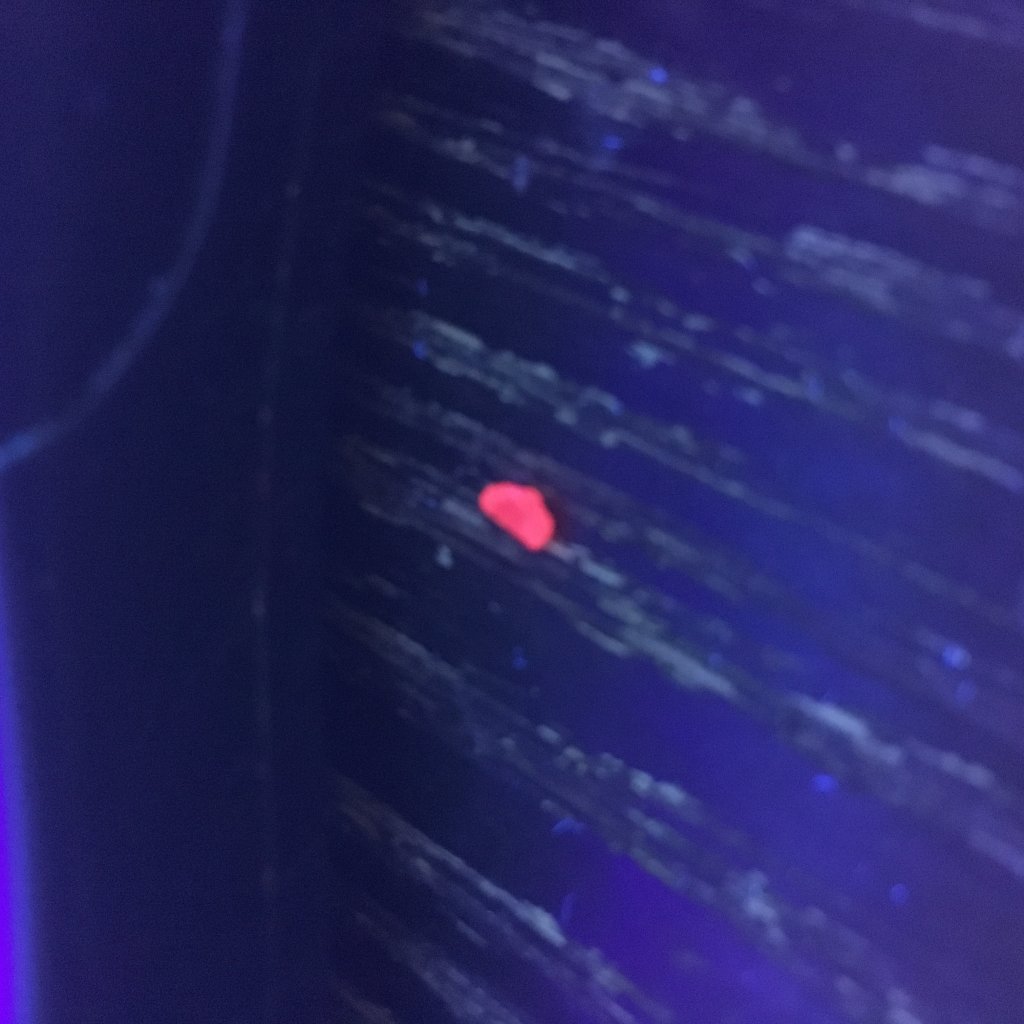-
Please join our new sister site dedicated to discussion of gold, silver, platinum, copper and palladium bar, coin, jewelry collecting/investing/storing/selling/buying. It would be greatly appreciated if you joined and help add a few new topics for new people to engage in.
Bullion.Forum

You are using an out of date browser. It may not display this or other websites correctly.
You should upgrade or use an alternative browser.
You should upgrade or use an alternative browser.
❓Your Mineral Identification Questions answered here
- Thread starter user 4386
- Start date

Help Support Prospecting Australia:
This site may earn a commission from merchant affiliate
links, including eBay, Amazon, and others.
Most 'UV' Torches are only a 'black light' and not a true UV... Not all that Fluorescent will Fluorescent using a black light...
LW...
LW...
- Joined
- May 1, 2014
- Messages
- 1,958
- Reaction score
- 2,530
I have a bit of a broader mineral ID question for someone with geo training - how common is it for a volcanic area of one kind to also contain minor intrusions of other kinds?
The reason I ask is because I've come to suspect that three seperate areas of volcanic geology I'm aware which are marked as being of the felsic variety also contain minor extrusions of the mafic kind. All the areas are dominated by pale-coloured, high silica type volcanic rocks and plugs. However, within each of them are what appears to be the remains of cone-shaped plugs - on a very much smaller scale - made of a very dark to black fine-grained rock which I'm sure is basalt or something similar. The soil immediately around these little cones of black rock is different to the soil in the general area - it's a rich red, tomato sauce colour.
Does this indicate a high iron content, typical of mafic-type volcanics?
My interest is of course the possibility of gemmy things of different kinds being possibly found in the same area. Is it correct that just because an area is dominated by one kind of volcanics, it doesn't mean that it can't also contain other types on a small scale?
The reason I ask is because I've come to suspect that three seperate areas of volcanic geology I'm aware which are marked as being of the felsic variety also contain minor extrusions of the mafic kind. All the areas are dominated by pale-coloured, high silica type volcanic rocks and plugs. However, within each of them are what appears to be the remains of cone-shaped plugs - on a very much smaller scale - made of a very dark to black fine-grained rock which I'm sure is basalt or something similar. The soil immediately around these little cones of black rock is different to the soil in the general area - it's a rich red, tomato sauce colour.
Does this indicate a high iron content, typical of mafic-type volcanics?
My interest is of course the possibility of gemmy things of different kinds being possibly found in the same area. Is it correct that just because an area is dominated by one kind of volcanics, it doesn't mean that it can't also contain other types on a small scale?
- Joined
- Oct 28, 2017
- Messages
- 32
- Reaction score
- 44
Hi guys, wondering if you might be able to give me an idea what these stones might be, the first one I fist discounted because I thought it was mica in it but after I cleaned it a Little it was the stones luster and the Little jet black ones I found in the bottom of a creek bed
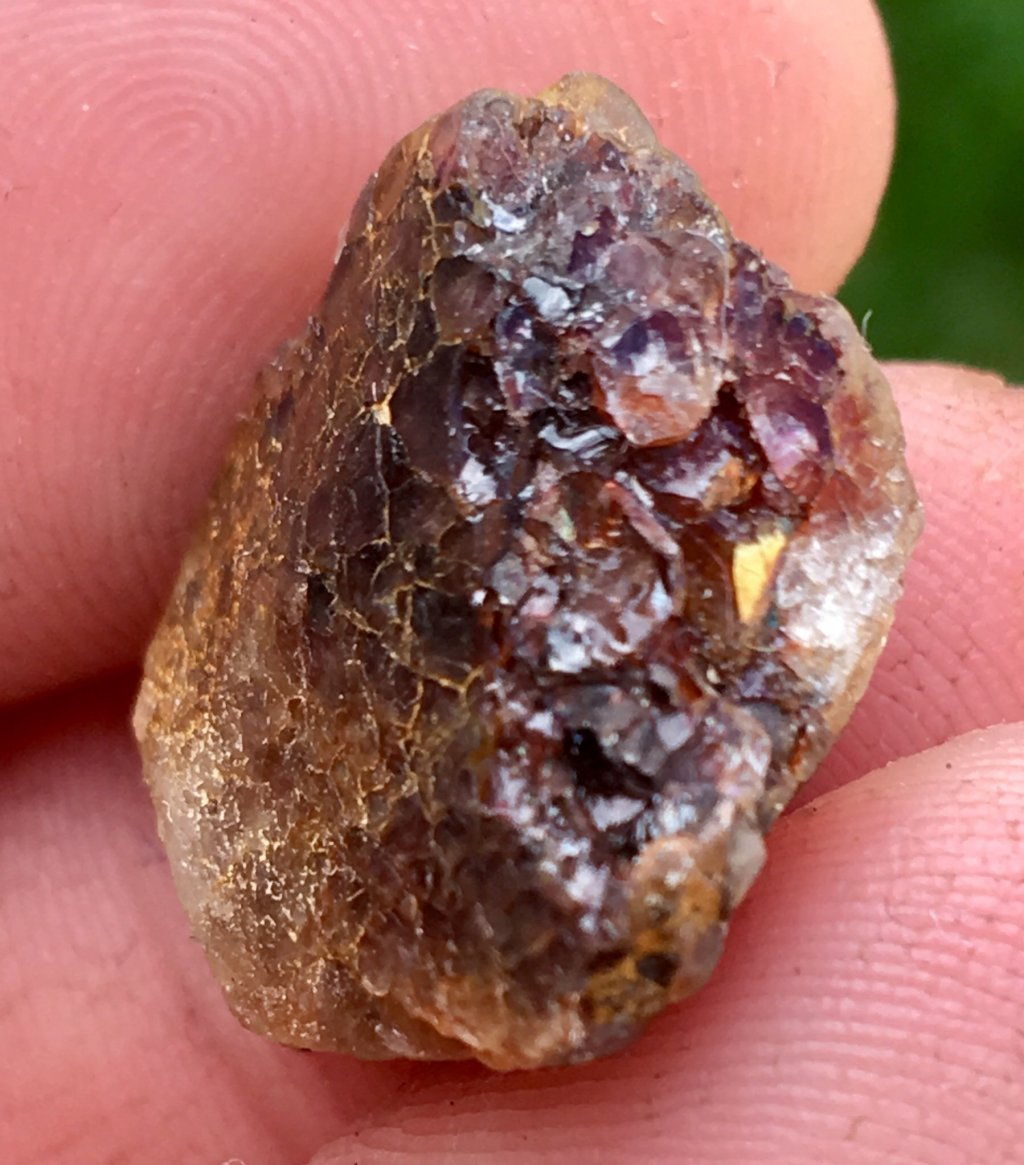
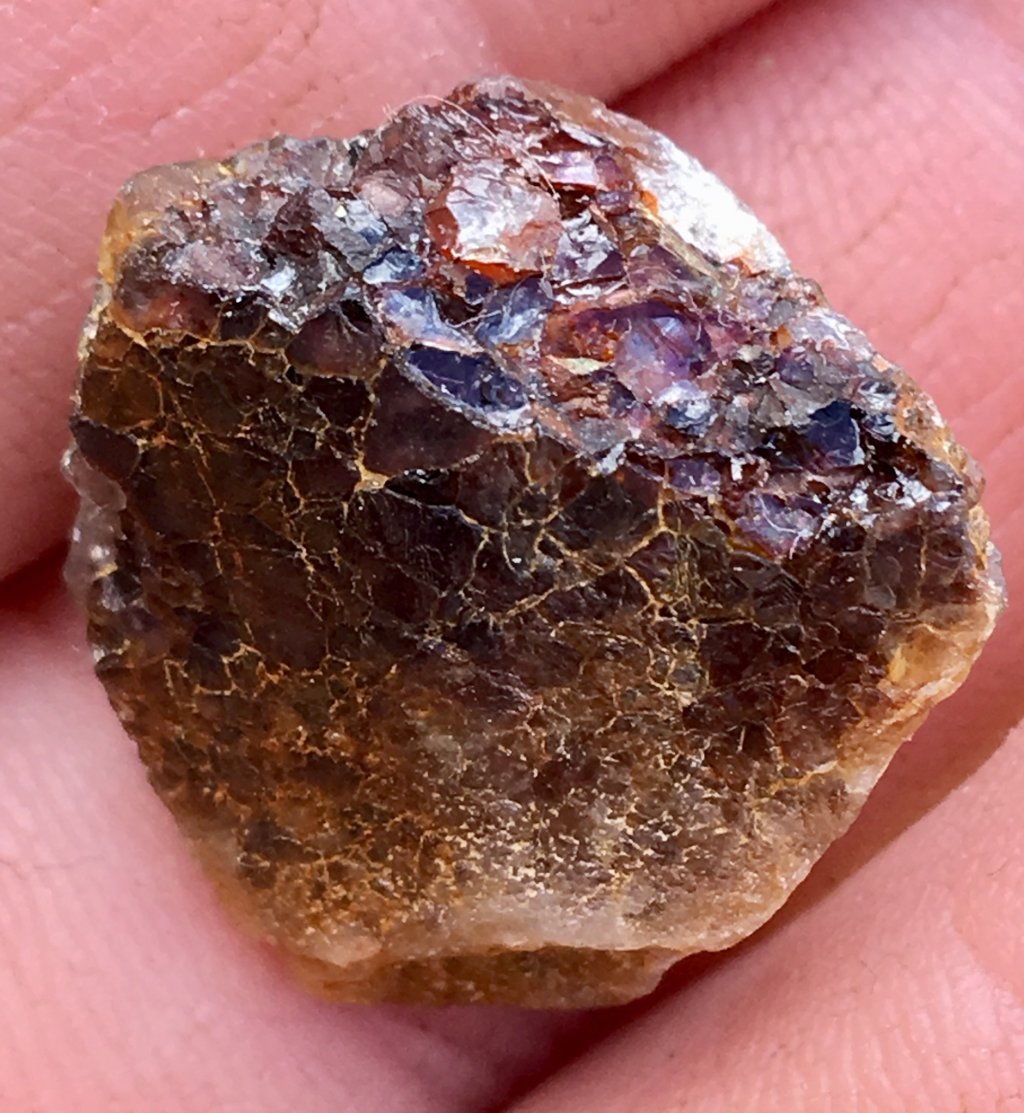
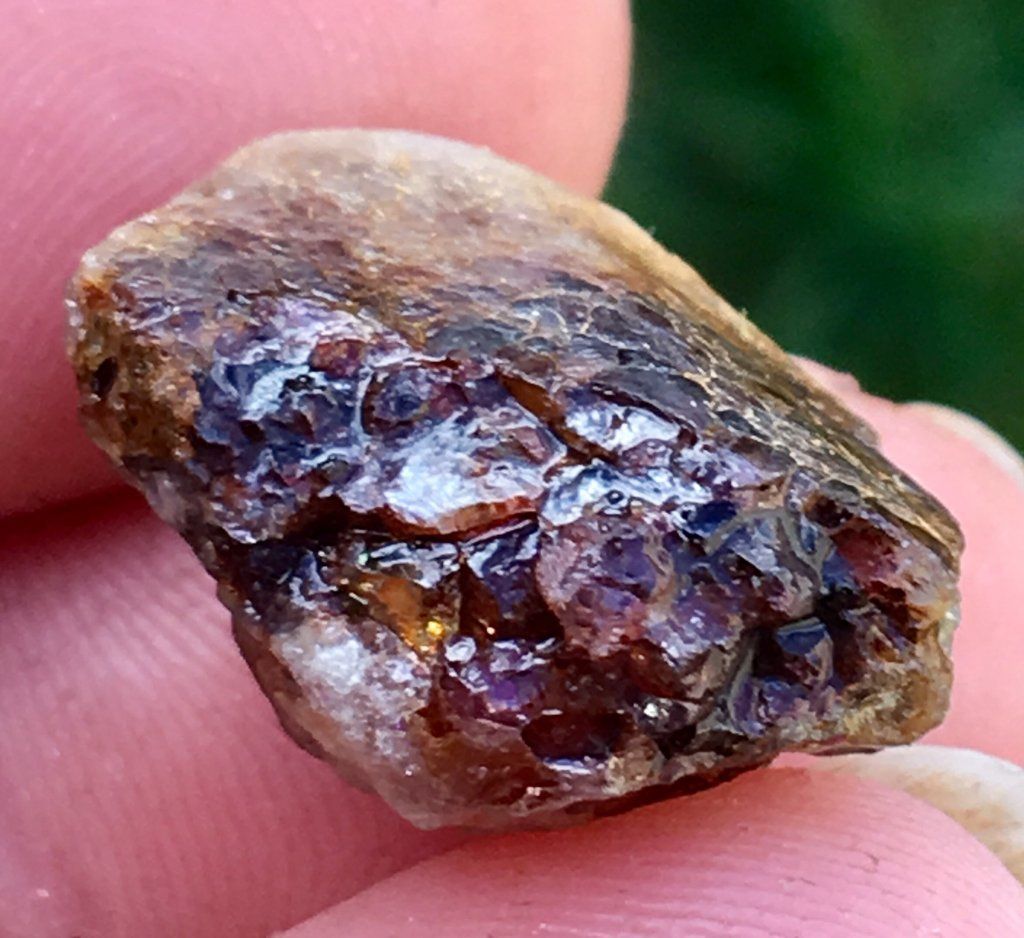
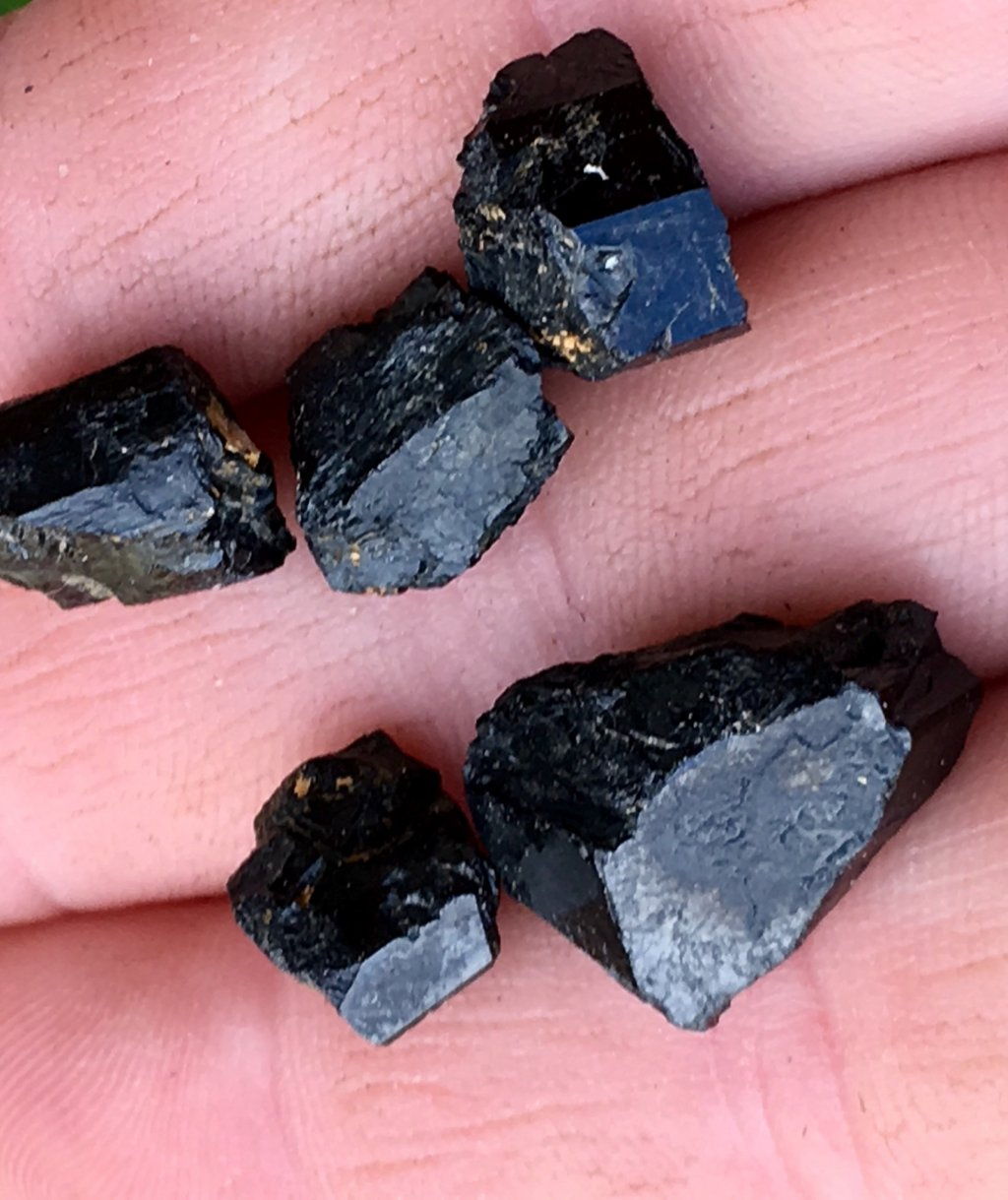
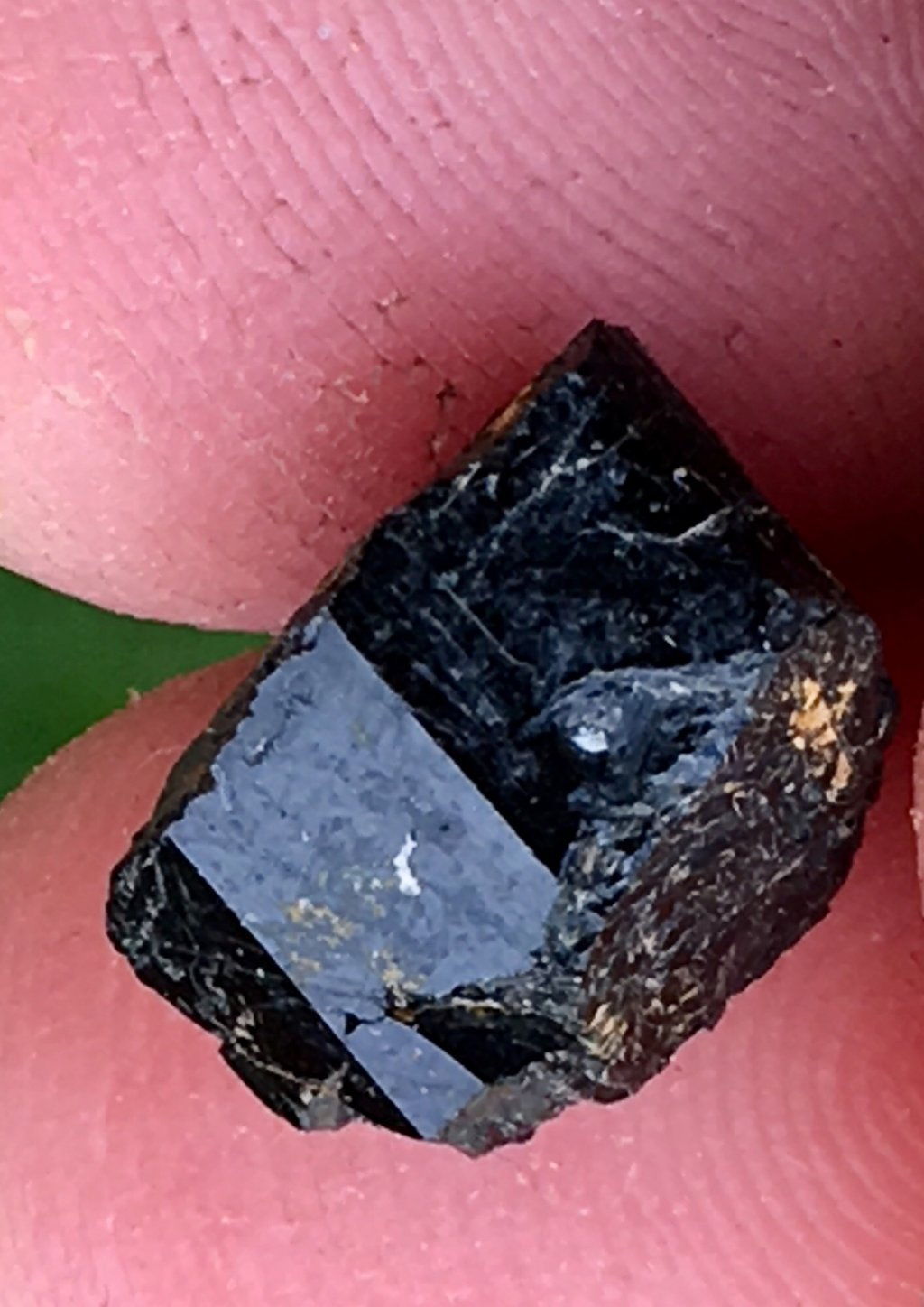
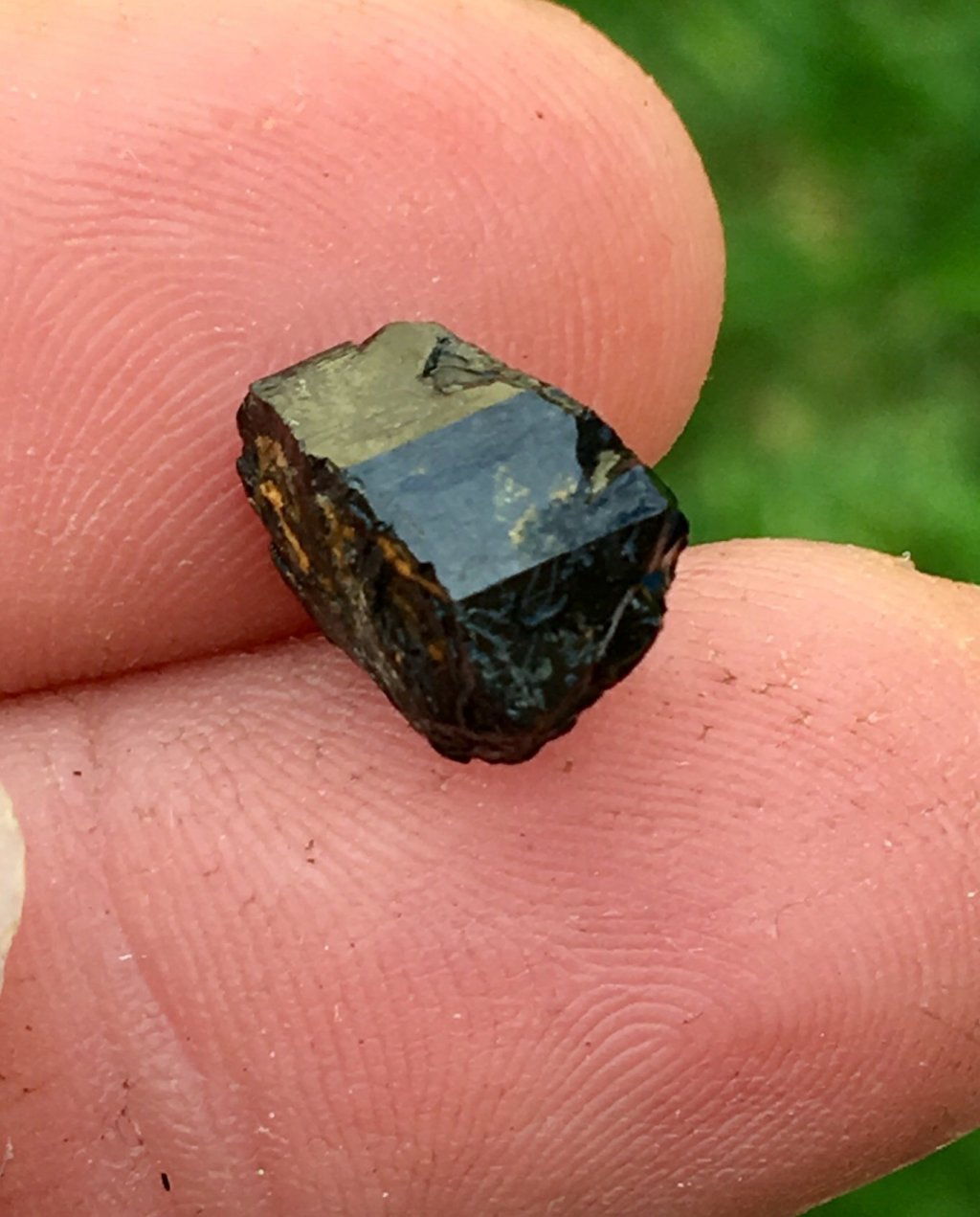
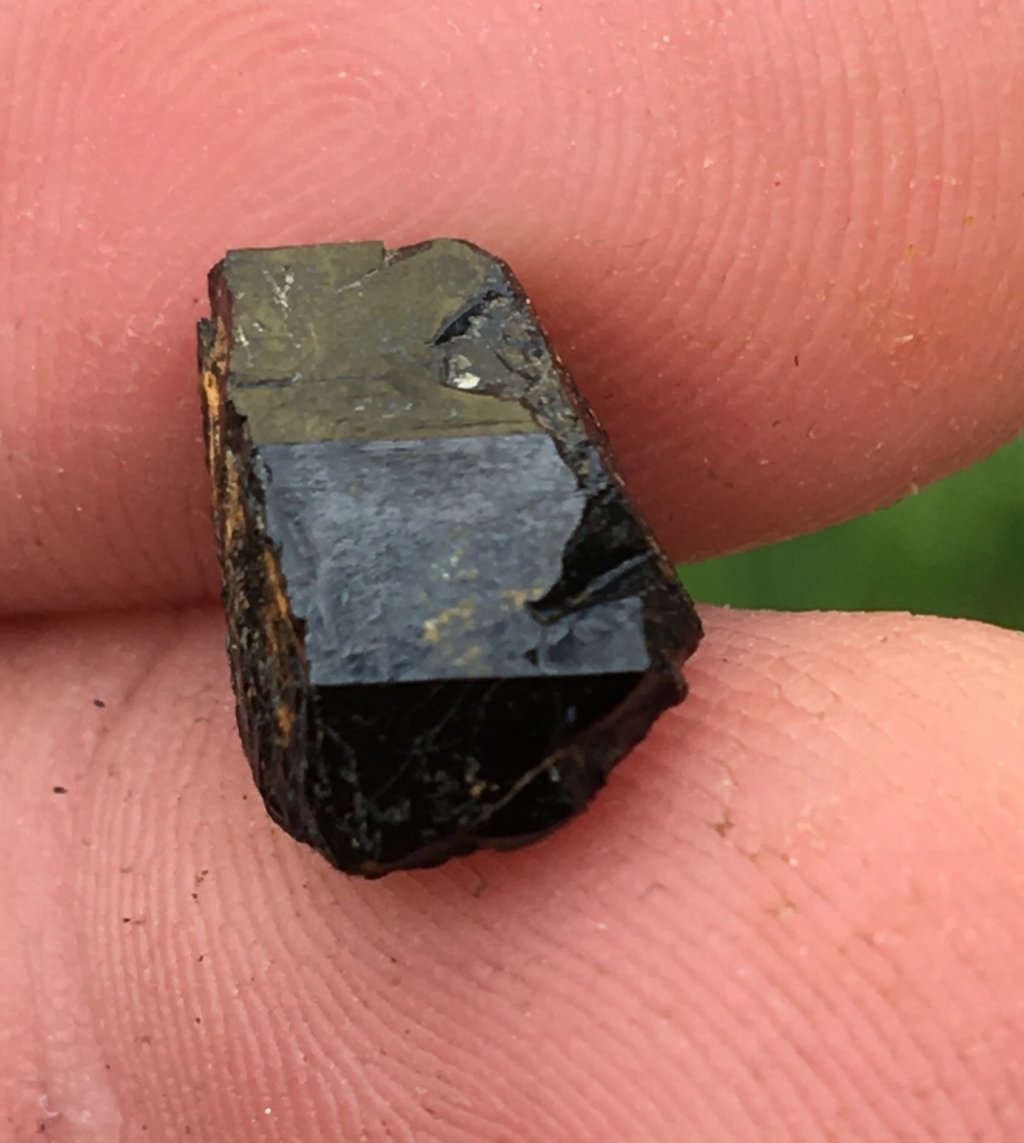







The coloured stuff looks like a combination of amethyst and citrine, amatrine maybe.
Black stuff as Lefty said, schorl maybe.
Black stuff as Lefty said, schorl maybe.
Lefty said:I have a bit of a broader mineral ID question for someone with geo training - how common is it for a volcanic area of one kind to also contain minor intrusions of other kinds?
The reason I ask is because I've come to suspect that three seperate areas of volcanic geology I'm aware which are marked as being of the felsic variety also contain minor extrusions of the mafic kind. All the areas are dominated by pale-coloured, high silica type volcanic rocks and plugs. However, within each of them are what appears to be the remains of cone-shaped plugs - on a very much smaller scale - made of a very dark to black fine-grained rock which I'm sure is basalt or something similar. The soil immediately around these little cones of black rock is different to the soil in the general area - it's a rich red, tomato sauce colour.
Does this indicate a high iron content, typical of mafic-type volcanics?
My interest is of course the possibility of gemmy things of different kinds being possibly found in the same area. Is it correct that just because an area is dominated by one kind of volcanics, it doesn't mean that it can't also contain other types on a small scale?
It is quite common. Sometimes they are the same age, but commonly they are simply formed in the same area at different times. Often the gems will just be associated with one generation. So in central Victoria we get trachytes, basalts, scoria cones (which are really a form of basalt) and even ultramafic flows next to each other - eg around Daylesford, or Woodend. Most of the sapphires are associated with the basalts in that area, as are large zircons and sometimes agates.
We even talk about areas of "bimodal volcanism". where for example everything is either very felsic or basaltic and formed simultaneously.
Very common - the intermittent but continuous volcanics in central Victoria over the last 30 million years are usually shown in one colour or two, yet represent a score of events of different age, or different compositions of the same age in different areas, varying from trachyte (eg Hanging Rock area) to basalt plains south of Ballarat, to scoria cones only 200,000 years old rising from those few million year old lava plains. The last eruption here was 3000 years ago, recorded in aboriginal legend, and has not actually ceased (molten lava still under Bass Strait ready to erupt any time). Different events have a different tendency to produce gemstones.
The eruptions bring up sapphires, rubies and zircons from great depth, agate and common opal and other attractive clcedony usually form in cavities in the lava after it is erupted (zeolites etc form in cavities as they are cooling as a rule)
That's a ruby, niiice. :Y: 
- Joined
- May 1, 2014
- Messages
- 1,958
- Reaction score
- 2,530
Mick Cov said:Well Im pretty stoked with that.
Im not sure if Broadford is typically gem stone country,be interested to hear if anyone else has found any in the area. :Y:
Hi Mick.
I'm not familiar with the area (Broadford in Vic?) but as per my discussion with Goldirocks a few posts above this one - you never know what can show up.
There can be tiny little gem producing pockets scattered about the place, too small to be of commercial importance but they are there nonetheless.
Mick Cov said:Heatho,if memory serves this wasnt really in the heavies in the pan.
Should I be looking in the heavies in the bottom of the pan when keeping an eye out for them?
Generally yes gemstones such as rubies and sapphire will be in the heavies, they are quite a bit heavier than most silica type sands, corundum is a specific gravity of around 4, most silica type sands around say 2.6.
If you use a pair of sieves and learn the correct shaking method then the heavier corundum will always work it's way to the bottom, then you flip the sieves onto the ground and the gems will be on top.
This vid explains it pretty well.
[video=480,360]https://youtu.be/uUSYnDleFlI[/video]
Too out of focus to tell. Could be a number of things.Mick Cov said:Under the up light it illuminates nicely.
Can I safely assume this is a Ruby or sapphire?https://www.prospectingaustralia.com/forum/img/member-images/8894/1522486589_9f3c4a42-f38e-4dbb-b5f9-77eb6c888465.jpg
Lefty said:Mick Cov said:Well Im pretty stoked with that.
Im not sure if Broadford is typically gem stone country,be interested to hear if anyone else has found any in the area. :Y:
Hi Mick.
I'm not familiar with the area (Broadford in Vic?) but as per my discussion with Goldirocks a few posts above this one - you never know what can show up.
There can be tiny little gem producing pockets scattered about the place, too small to be of commercial importance but they are there nonetheless.
If it was a ruby at Broadford it would be a first I suspect, but as discussed not necessarily impossible. Rubies are a bit sparse here, sapphires are more the rule. I'm guessing it is because the red colour of ruby requires chromium, the blue (one important colour) of sapphire requires iron and titanium. The sapphires here definitely occur with basalt (rock high in iron and titanium) whereas the rubies of the world are often associated with more ultramafic rocks and high grade metamorphic rocks and limestones now altered to marble (ultramafic rocks are higher in chromium than is basalt), e.g. Burma. So both are the mineral corundum, but the colour of the corundum varies depending on how it formed.
Pink garnets are a lot more common than rubies, especially in Victoria, so much more likely. They are often associated with granite and felsic (light-coloured) lava.
https://www.bing.com/images/search?q=pink+garnet+photos&qpvt=pink+garnet+photos&FORM=IGRE
https://www.bespoke-gems.com/images...nge-garnet-freehand-no-design-1111d-small.jpg
Extremely common and sadly much less valuable - often dozens to a dish. Usually not such a nice colour as yours though
Pink tourmaline (rubellite) is also associated with granites but is not widespread in Victoria (some in Strathbogies and around Beechworth - produced at Forrestonia in WA).
https://www.bing.com/search?q=rubel...r!s0pLAZE1Y*r!ZtnFen77q55iqMRvrSxMo5r&PC=HCTS
https://www.bing.com/images/search?q=pink+garnet+photos&qpvt=pink+garnet+photos&FORM=IGRE
https://www.bespoke-gems.com/images...nge-garnet-freehand-no-design-1111d-small.jpg
Extremely common and sadly much less valuable - often dozens to a dish. Usually not such a nice colour as yours though
Pink tourmaline (rubellite) is also associated with granites but is not widespread in Victoria (some in Strathbogies and around Beechworth - produced at Forrestonia in WA).
https://www.bing.com/search?q=rubel...r!s0pLAZE1Y*r!ZtnFen77q55iqMRvrSxMo5r&PC=HCTS
Similar threads
- Replies
- 8
- Views
- 8K
- Replies
- 76
- Views
- 25K
- Replies
- 41
- Views
- 15K



